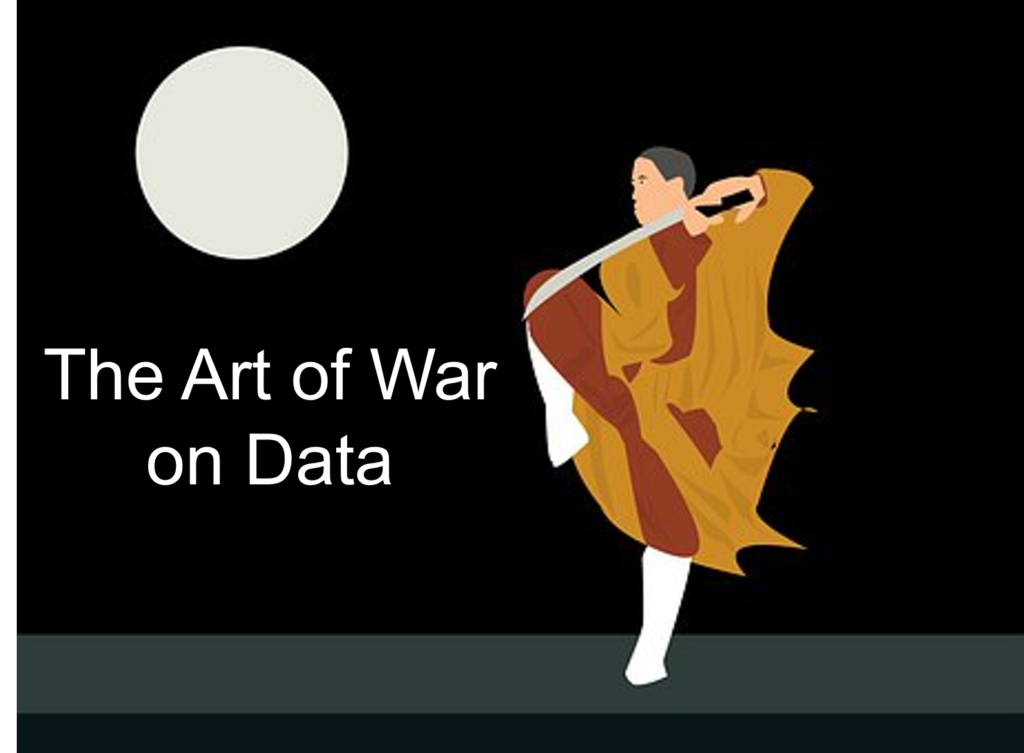The Art of War on Data

The Art of War is attributed to the ancient Chinese military strategist Sun Tzu and remains the most influential book in East Asian warfare and Western cultures. This book explains Chinese military tactics, from strategy and weapons to rank, discipline, and training techniques. However, what is truly unique is that Sun Tzu wrote this book in the 5th century BC.
During the Sengoku period (c. 1467–1568), the Japanese daimyō named Takeda Shingen (1521–1573) became almost invincible in all battles without relying on guns because he studied The Art of War. The book even inspired him for his famous battle standard “Fūrinkazan” (Wind, Forest, Fire, and Mountain), meaning fast as the wind, silent as a forest, ferocious as fire, and immovable as a mountain.
The Art of War on Data is a complicated war fought on a financial battlefield between competing corporations where analytics for competitive advantage decides the winners and losers in business.
Previously, companies held their database of choice as the competitive analytic advantage to wage war on competitors, including IBM DB2, Oracle, SQL Server, and Teradata. However, over 25 relational database platforms are available on-premises and on the cloud.
With data volumes increasing like a Tsunami, no database has the power and capacity to hold all of the data. And it is not only about storing the data because systems easily become overwhelmed when too many users attempt to query the system simultaneously.
The Art of War on Data is not about choosing the best database but about software allowing users to query, federate and migrate data across all databases.
If your company wants to win the Art of War on Data, each employee dealing with data needs to be fast as the wind, silent as a forest, ferocious as fire, and immovable as a mountain. The only weapon needed is the best software ever built, Nexus, developed and tested at major customer sites for almost 20 years!
Fast as the wind through federation – time is money, and money is time, and users can speed up analytics by accessing and joining data no matter where it resides. While many find it impossible to imagine joining two tables spanning two systems, Nexus stress tests are joining 30 tables across 30 systems.
Silent as a forest because each user has the power at their fingertips – the most popular data tool has been Excel because users can integrate and manipulate data and analytics from different sources. However, Nexus is joining 19 Excel spreadsheets with production tables in stress tests.
Ferocious as fire – the most difficult aspect of multiple databases is moving data across systems. Nexus allows users to move a single table to any system or migrate thousands of tables with a mouse click.
Immovable as a mountain – companies have had to make moves each time their database vendor raised the price or changed the rules. Still, Nexus allows companies to migrate or join data across systems automatically. Most companies don’t realize it today, but the reality is that they will deal with hundreds of database technologies over the next decade. While nobody can predict the future perfectly, no matter what platform, cloud, or technology becomes dominant, Nexus is ready to query, migrate, or federate the data making each company using Nexus immovable as a mountain.
If you want to see automatic migration and joining 30 tables across 30 systems, watch the video below.
